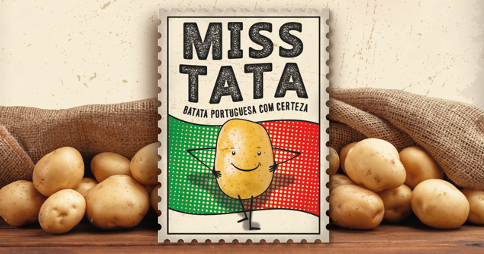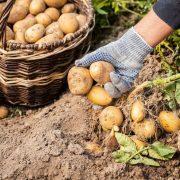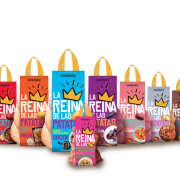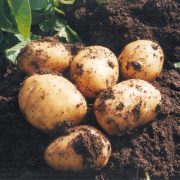Miss Tata, the brand for the Portuguese potato
Porbatata – Portuguese Potato Association creates brand to promote Portuguese potatoes worldwide.
Today, Porbatata, Associação da Batata de Portugal (Portuguese Potato Association) presented Miss Tata, the new collective brand for promoting Portuguese potatoes in the domestic and international marketplace. This is the first time that the Portuguese potato segment has united to create a collective image for this product, investing in differentiation and quality.
Miss Tata is versatile, dynamic, colourful, and cheerful. She’s the ambassador of Portuguese potatoes worldwide and aims to reflect qualities that lead to a nutritious and balanced diet. Miss Tata is proud to be Portuguese.
Porbatata presented the new brand through a live broadcast on Facebook with the presence of João Torres, Secretary of State for Trade, Services and Consumer Rights, Nuno Russo, Secretary of State for Agriculture and Rural Development, Berta Redondo Benito, Secretary-General of Europatat and Sérgio Ferreira, president of Porbatata.
Porbatata has a project for Promoting Portuguese Potatoes in Foreign Markets running for two years. France, Germany, Spain, the Netherlands, the United Arab Emirates and Angola are considered to be strategic markets.
This project is supported by Portugal 2020, within the scope of the Competitiveness and Internationalization Operational Programme, with an overall forecast investment of 352,988 euros, of which 85% is financed by the ERDF – European Regional Development Fund.
Besides creating a specific collective brand, other initiatives are planned, such as being present at international events and running promotional activities. Porbatata also aims to organise an International Portuguese Potato Competition in France.
In 2019, potato exports amounted to 28.5 million euros. The main destination markets were Spain, Germany, the Netherlands, Cape Verde, France, Belgium, and Luxembourg.
In Portugal, potato consumption per capita is 93.6 kilos a year. Potatoes are produced throughout the country but especially in the Entre Douro e Minho, Trás-os-Montes, Beira Interior, Beira Litoral, Oeste, Ribatejo, Península de Setúbal e Costa Alentejana areas. In total, the land used for growing this food amounts to 22 thousand hectares and the average annual production is close to 500 thousand tonnes.
















